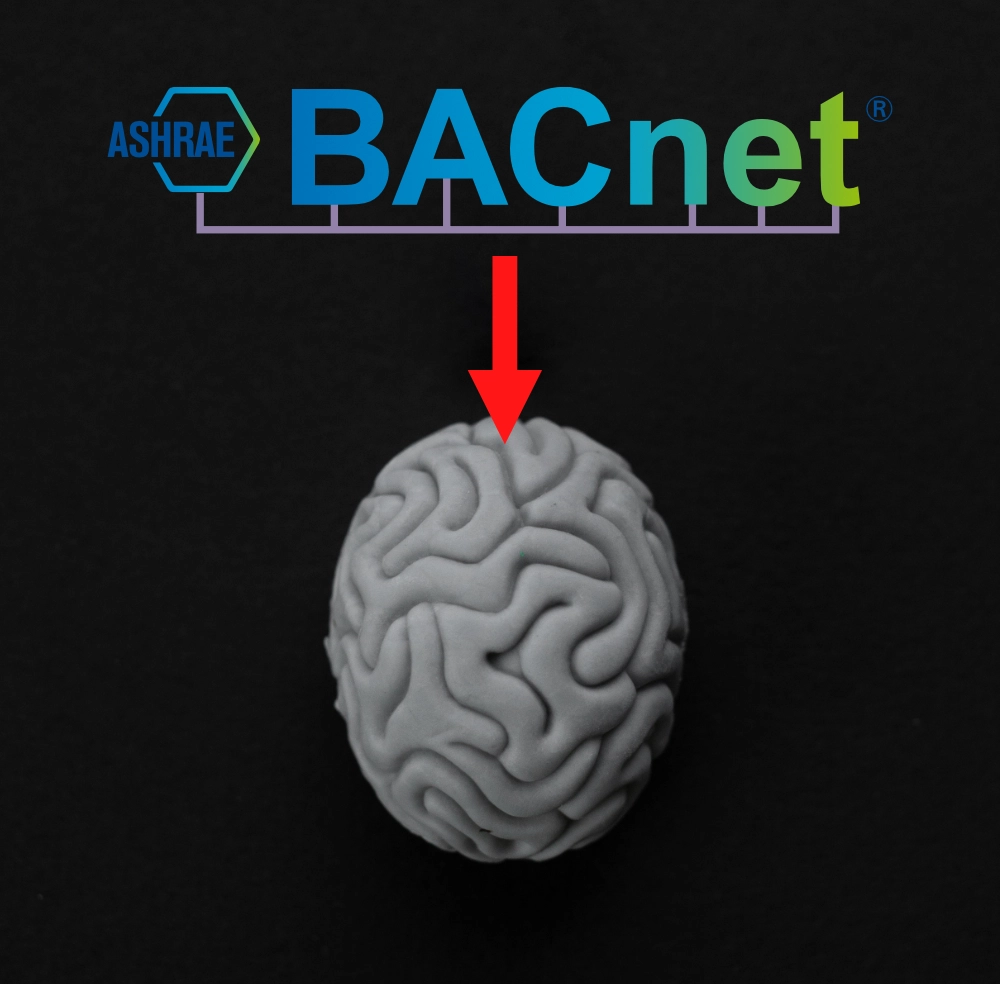
Building automation systems have become increasingly popular over the past few decades. Many buildings rely on sophisticated networks of sensors, controls, and other devices to maintain comfort, safety, and energy efficiency.
BACnet MSTP, (also BACnet MS/TP, BACnet-MSTP, and BACnet-MS/TP) or Master-Slave/Token-Passing, is a communication protocol used in building automation systems that allow devices to communicate with each other over a network. In this article, we will discuss the basics of BACnet MSTP, its importance in building automation systems, and different network topologies that can be used.
Brief History and Development of BACnet MSTP
BACnet, which stands for Building Automation and Control Network, was first introduced in 1987 as a standard communication protocol for building automation systems. Since then, it has undergone several revisions and updates, with continued revisions over the years to increase capability and improve communications security.
BACnet MSTP was developed in the mid-1990s as an alternative to the original BACnet protocol, which relied on Ethernet and other high-speed networks. MSTP was designed to work over slower and more cost-effective networks, making it ideal for smaller buildings or installations where Ethernet and Local Area Networks are not available or not feasible.
BACnet MSTP Basics
Definition of BACnet MSTP
BACnet MSTP is a communication protocol that allows devices to communicate with each other over a low-speed (compared to Ethernet), half-duplex RS-485 network. It uses a Master-Slave/Token-Passing scheme (now often referred to as a Client/Server scheme, which means that one device on the network acts as the master, controlling the flow of data between the other devices. Devices on the network are assigned unique addresses and communicate using packets of data called frames.
Components of a BACnet MSTP Network
A BACnet MSTP network consists of several components, including:
- Master device: This is the device that controls the flow of data on the network. It sends out tokens that allow other devices to transmit data.
- Slave devices: These are the devices that communicate with the master device. They can only transmit data when they have been granted a token by the master.
- RS-485 network (EIA-485 network): This is the physical network over which devices communicate. It consists of a twisted pair of wires, with each device connected to the network using a terminal block.
Key Features and Benefits of BACnet MSTP
BACnet MSTP has several key features that make it ideal for building automation systems. These include:
- Low cost: Because it uses a simple and low-speed network, BACnet MSTP is much less expensive than other communication protocols.
- Easy installation: The RS-485 network used by BACnet MSTP is easy to install and can be extended as needed.
- Robustness: BACnet MSTP is designed to be robust and reliable, even in noisy or harsh environments.
- Scalability: BACnet MSTP networks can be easily expanded or modified to accommodate new devices or changes to the building layout.
BACnet MSTP Network Topology
Overview of Different Network Topologies
BACnet MSTP networks can be configured in several different topologies (the interconnected pattern of network elements), depending on the needs of the building or installation. The most common topologies are daisy chain and star. Most systems use the daisy chain topology in the building automation scenario, so we will focus on it for this article.
Daisy Chain Topology - Advantages and Disadvantages
In a daisy chain topology, devices are connected to the network in a linear chain. Each device is connected to the previous device and the next device in the chain, with the master (client) device at one end of the chain and the slave (server) devices attached at points along the chain. This topology is simple and easy to install but can be prone to signal degradation and device failures. If one device fails or the daisy chain wiring is compromised, all devices on the entire daisy chain will be affected.
In the BAS world, the caster would act as the central hub and typically have many RS-485 driver ports, one for each daisy chain with many slave devices (client devices) in each chain.
Understanding the Communication Protocol
The BACnet MSTP communication protocol consists of several layers, including the physical, data link, network, and application layers. Each layer is responsible for a different aspect of communication on the network.
The physical layer is responsible for transmitting data over the network. It defines the electrical characteristics of the RS-485 network, including voltage levels, signaling rate, and cable length.
The data link layer is responsible for framing data into packets called frames. It also manages access to the network, using a Master-Slave/Token-Passing (MSTP) scheme to ensure that only one device can transmit at a time.
The network layer is responsible for routing frames between devices on the network. It uses a simple addressing scheme to identify devices and route frames to their intended destination.
Finally, the application layer is responsible for defining the structure and content of the data being transmitted. It includes a wide range of standard objects and services that can be used to control and monitor building automation systems.
How Devices Communicate on a BACnet MSTP Network
Devices on a BACnet MSTP network communicate using frames of data. Each frame consists of a header, a data field, and a checksum. The header contains information about the frame, including the sender and receiver addresses. The data field contains the actual data being transmitted, which can be any type of information, from temperature readings to control signals. The checksum is used to ensure that the frame has been transmitted correctly and has not been corrupted during transmission.
When a device wants to transmit data on the network, it must first wait for a token to be granted by the master device. The token is a special packet that allows the device to transmit data on the network. Once the device has the token, it can transmit a frame of data. The other devices on the network receive the frame and check the checksum to ensure that it has been transmitted correctly. If the frame is valid, the receiving device can process the data and respond if necessary.
BACnet MSTP Thermostats
Overview of BACnet MSTP devices and their functions
BACnet MSTP devices come in a wide range of types and functions, from simple sensors to complex controllers. Some common types of devices include:
- Sensors: These devices measure physical parameters such as temperature, humidity, and pressure.
- Actuators: Control physical processes such as heating, cooling, and ventilation.
- Controllers: These devices coordinate the operation of multiple sensors and actuators, using information from the network to optimize building performance.
- Displays & Thermostats: These devices provide visual feedback to building operators, showing information such as temperature readings, and system status and allowing local comfort adjustments.
Explanation of Different Types of BACnet MSTP Devices
BACnet MSTP devices can be divided into two main categories: smart devices and dumb devices. Smart devices have built-in intelligence and can communicate with other devices on the network, while dumb devices are simple sensors or actuators that do not have any additional communication capabilities.
Smart devices, such as the NetX X-Series thermostats are more versatile and can be used in a wider range of applications. They can connect to the BACnet MSTP network and provide real-time status and sensor information while simultaneously controlling HVAC equipment and communicating over Wi-Fi or Ethernet for even more advanced user interface capabilities. This combination allows more detailed information about building performance and energy usage and allows the powerful NetX commercial IoT devices to handle a substantial amount of the HVAC system control burden, rather than placing all of the responsibility on a central BACnet MSTP central controller.
Benefits of BACnet MSTP Devices
BACnet MSTP devices offer a range of benefits for building engineers and facilities managers, including:
- Seamless integration with other building automation systems, such as lighting and security systems
- Reduced Energy Costs - By connecting all of the thermostats in a building to a central network, building managers can more easily monitor and adjust temperatures to ensure that the building is not using more energy than necessary.
- Increased Property Value - Because BACnet thermostats and systems are often seen as an important improvement to a property, installing NetX BACnet thermostats, with their dual-use, commercial IoT capabilities, can also increase the property’s value. Properties with BACnet building automation systems often sell for more than those without them.
- Lower Insurance Rates - BACnet thermostats often include various temperature, humidity, occupancy, CO2, VOC, and water leak detection sensors. It is not uncommon for building owners to experience lower insurance rates with BACnet thermostats with water leak sensing and alerting because they reduce insurance risks.
- Improved Indoor Air Quality - BACnet thermostats are great tools for improving indoor air quality. By using CO2 and VOC sensors, a BACnet thermostat will monitor, alert and manage fresh air intake to help improve indoor air quality and create a more comfortable environment. BACnet devices can be set to operate fans and other ventilation systems when needed to improve air circulation and can also reduce the risk of mold and mildew growth by managing UV-C air cleaning hardware.
Final Thoughts
In today's world, BACnet MSTP is a reliable and efficient protocol that has been proven effective in controlling and monitoring building systems such as HVAC, lighting, security, and fire protection.
Network Thermostat offers BACnet devices specifically designed for commercial buildings, including our NetX Wi-Fi and Ethernet thermostats and NetX Wi-Fi/485 thermostat products.



